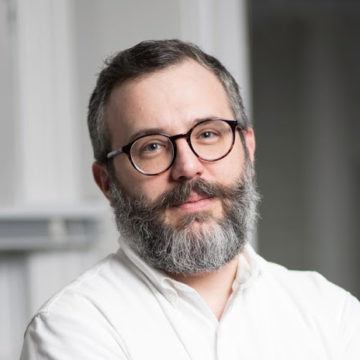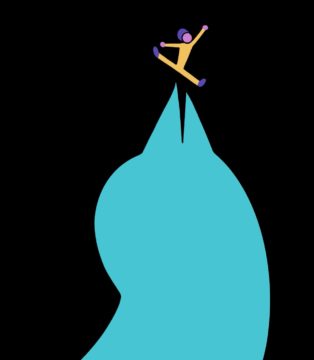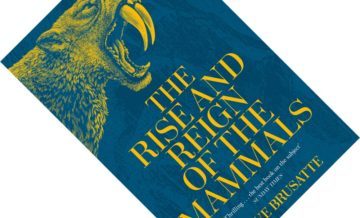Category: Recommended Reading
From aardvark to woke: inside the Oxford English Dictionary
Pippa Bailey in New Statesman:
 The team at the Oxford English Dictionary felt some nervousness about writing the definition for “Terf”, an acronym for trans-exclusionary radical feminist, which this month has been added to its pages. “To a certain extent, it is like any other word,” says Fiona McPherson, a 50-year-old lexicographer from Grangemouth, Stirlingshire, who has worked at the dictionary since 1997. “But it would be disingenuous to say that it is exactly the same. There seems more at stake. You want to be accurate, you want to be neutral. But it’s a lot easier to be neutral about a word that isn’t controversial.”
The team at the Oxford English Dictionary felt some nervousness about writing the definition for “Terf”, an acronym for trans-exclusionary radical feminist, which this month has been added to its pages. “To a certain extent, it is like any other word,” says Fiona McPherson, a 50-year-old lexicographer from Grangemouth, Stirlingshire, who has worked at the dictionary since 1997. “But it would be disingenuous to say that it is exactly the same. There seems more at stake. You want to be accurate, you want to be neutral. But it’s a lot easier to be neutral about a word that isn’t controversial.”
The Oxford English Dictionary (OED) has served as a lexical record of the world’s most widely spoken language – and its culture – since it was founded in the mid-19th century. “Post-truth”, for example, was the dictionary’s word of 2016, the year of Brexit and Trump, while in 2020 it elected not to choose one – because no single word could sum up the pandemic experience. Last year, “police brutality”, “deadname”, “cancel culture” and “anti-vaxxer” entered the dictionary for the first time; previous years gave us “fake news” (2019), “Silent Generation” (2018) and “woke” (2017).
The June 2022 update includes several terms that reflect our changing understanding of sexuality and gender: “multisexual”, “pangender”, “gender expression”, “gender presentation” and “enby” (derived from “NB”, meaning “non-binary”), as well as Terf.
More here.
Wednesday Poem
First Flush
At that age when love is more
of an academic necessity than
a cinematic happenstance, you
learn to will your lover to
manifest, conjurer like.
Your viraha, crowded with
the airy mass of calf love,
makes a ritual out of obsession.
When the face of your beloved springs at
the door, you become a believer
overnight. Poetry seems possible.
Absolved of their comic absurdity,
black-n-white film songs turn into
indispensable anthems. Waiting
is a season you never want to
end. Young love is like first
flush tea advertisements —
fresh, light and airy.
Overworked telephone lines
do their best to carry the
hearts electric beats.
Between mangled words and choppy
laughter, a city evening is
redeemed. For the rest of
the season, there’s paper and
pen. Epistolary conveyors that ferry
more pauses than words. The heart
is but a traveling historian.
by Bhaswati Ghosh
from Mono, issue 1
Viraha (Hindi): The realization of love through separation
Cassidy Hutchinson Did Her Job
Michelle Cottle in The New York Times:
 In this age of political cowardice and self-dealing, it can be easy to forget that public service is supposed to be a noble calling — one that at times requires people to step up and do hard, scary things. On Tuesday, a former White House aide named Cassidy Hutchinson reminded us what that looks like. Ms. Hutchinson, who worked for the White House chief of staff, Mark Meadows, in the violent, closing days of the Trump administration, was the surprise witness in a last-minute hearing of the Jan. 6 House committee. With intimate knowledge of what went down inside the Trump West Wing, Ms. Hutchinson shared what she saw and heard during the attack on the Capitol as the defeated president, drunk on disappointment and desperation, tried to cling to power.
In this age of political cowardice and self-dealing, it can be easy to forget that public service is supposed to be a noble calling — one that at times requires people to step up and do hard, scary things. On Tuesday, a former White House aide named Cassidy Hutchinson reminded us what that looks like. Ms. Hutchinson, who worked for the White House chief of staff, Mark Meadows, in the violent, closing days of the Trump administration, was the surprise witness in a last-minute hearing of the Jan. 6 House committee. With intimate knowledge of what went down inside the Trump West Wing, Ms. Hutchinson shared what she saw and heard during the attack on the Capitol as the defeated president, drunk on disappointment and desperation, tried to cling to power.
She did so knowing full well the abuse and threats that those who cross Donald Trump on even minor matters often suffer. She did so because, unlike so many of the bootlickers with whom Mr. Trump surrounds himself, she still has a spine.
More here.
Ode To Grapefruit
Isobel Wohl at Astra Magazine:
 I have never liked grapefruit. They are hard to peel. A friend of mine once used them to practice tattooing: the leathery skin can stand up to the action of the gun, it turns out, plus it holds ink well enough and provides a sizable canvas. I suppose any fruit that can mimic human skin has the right to resist my fingers as they try to reach its flesh. A large knife would do the trick, but I don’t believe fruit should require butchery. I am an American born in the nineteen-eighties; I was raised in a place and time that had subordinated all other values to blithe consumption. I expect any fruit to denude itself in my hands at the slightest effort, like an eager lover or an EZ-peel clementine.
I have never liked grapefruit. They are hard to peel. A friend of mine once used them to practice tattooing: the leathery skin can stand up to the action of the gun, it turns out, plus it holds ink well enough and provides a sizable canvas. I suppose any fruit that can mimic human skin has the right to resist my fingers as they try to reach its flesh. A large knife would do the trick, but I don’t believe fruit should require butchery. I am an American born in the nineteen-eighties; I was raised in a place and time that had subordinated all other values to blithe consumption. I expect any fruit to denude itself in my hands at the slightest effort, like an eager lover or an EZ-peel clementine.
But when I break the skin of a grapefruit, the pith launches its smell at me. In an instant I am drunk on it.
more here.
The Gospel According to Mavis Staples
David Remnick at The New Yorker:
 Mavis Staples has been a gospel singer longer than Elizabeth II has worn the crown. During concerts, sometimes, she might take a seat and rest while someone in her band bangs out a solo for a chorus or two. No one minds. Her stage presence is so unfailingly joyful—her nickname is Bubbles—that you never take your eyes off her. Staples sings from her depths, with low moans and ragged, seductive growls that cut through even the most pious lyric. She is sanctified, not sanctimonious. In her voice, “Help Me Jesus” is as suggestive as “Let’s Do It Again.” When she was a girl, singing with her family ensemble, the Staple Singers, churchgoers across the South Side of Chicago would wonder how a contralto so smoky and profound could issue from somebody so young.
Mavis Staples has been a gospel singer longer than Elizabeth II has worn the crown. During concerts, sometimes, she might take a seat and rest while someone in her band bangs out a solo for a chorus or two. No one minds. Her stage presence is so unfailingly joyful—her nickname is Bubbles—that you never take your eyes off her. Staples sings from her depths, with low moans and ragged, seductive growls that cut through even the most pious lyric. She is sanctified, not sanctimonious. In her voice, “Help Me Jesus” is as suggestive as “Let’s Do It Again.” When she was a girl, singing with her family ensemble, the Staple Singers, churchgoers across the South Side of Chicago would wonder how a contralto so smoky and profound could issue from somebody so young.
She is eighty-two. While singers a fraction of her age go to great lengths to preserve their voices, drinking magical potions and warming up with the obsessive care of a gymnast, she doesn’t hold back.
more here.
Mavis Staples: NPR Music Tiny Desk Concert
Tuesday, June 28, 2022
Mary Gaitskill on the deracination of literature
Mary Gaitskill in UnHerd:
 As a fiction writer who teaches, I often speak about what I love in fiction, what to me makes it powerful and engaging. This is a version of a talk I have been giving for years to students and other interested parties; it is a talk I’ve become — what is the right word? — uncertain about in the last five years, not because I don’t believe what I’m saying or that I care about it less but because I’m not sure that people can find it meaningful anymore.
As a fiction writer who teaches, I often speak about what I love in fiction, what to me makes it powerful and engaging. This is a version of a talk I have been giving for years to students and other interested parties; it is a talk I’ve become — what is the right word? — uncertain about in the last five years, not because I don’t believe what I’m saying or that I care about it less but because I’m not sure that people can find it meaningful anymore.
There are a number of reasons I feel this, most of which have to do with how we take in knowledge and information and how that has changed the nature of perception. I’m not saying anything new here: think iPhones and the constant staring there at, a skull-fracturing change which plainly has consequences beyond how people understand the reading and writing of fiction.
Which by itself — the reading and writing of fiction — is a very hard thing to talk about without falling all over yourself.
More here.
Sean Carroll’s Mindscape Podcast: Andrew Papachristos on the Network Theory of Gun Violence
Sean Carroll at Preposterous Universe:
 The United States is suffering from an epidemic of tragic gun violence. While a political debate rages around the topic of gun control, it remains important to understand the causes and possible remedies for gun violence within the current system. Andrew Papachristos is a sociologist who uses applied network science to study patterns of street violence in urban areas. His research shows that such violence is highly non-random; knowing something about the social networks of perpetrators and victims can help identify who might be at heightened risk of gun violence. It’s an interesting example of applying ideas from mathematics and computer science to real-world social situations.
The United States is suffering from an epidemic of tragic gun violence. While a political debate rages around the topic of gun control, it remains important to understand the causes and possible remedies for gun violence within the current system. Andrew Papachristos is a sociologist who uses applied network science to study patterns of street violence in urban areas. His research shows that such violence is highly non-random; knowing something about the social networks of perpetrators and victims can help identify who might be at heightened risk of gun violence. It’s an interesting example of applying ideas from mathematics and computer science to real-world social situations.
More here.
Agnes Callard: If I Get Canceled, Let Them Eat Me Alive
Agnes Callard in the New York Times:
 What should my friends do if I am being canceled?
What should my friends do if I am being canceled?
A decade ago, when I was a nonpublic philosopher writing only for a small group of academics, it would never have occurred to me to ask myself this question. But things have changed. These days, anyone with a public-facing persona must contemplate the prospect of having her reputation savagely destroyed.
A few years ago, I wrote an essay that, in passing, questioned faculty solidarity with unionizing graduate students. I had not realized how sensitive that topic was, and I was inundated with angry and hateful messages and a few threats online. In the scheme of things, the episode was quite mild, lasting only a few weeks. But it felt all-consuming at the time. And it was a taste of what could come.
More here.
Is nature friend or foe? Slavoj Žižek and Yuval Noah Harari discuss
Does Hungary Offer a Glimpse of Our Authoritarian Future?
Andrew Marantz in The New Yorker:
 The Republican Party hasn’t adopted a new platform since 2016, so if you want to know what its most influential figures are trying to achieve—what, exactly, they have in mind when they talk about an America finally made great again—you’ll need to look elsewhere for clues. You could listen to Donald Trump, the Party’s de-facto standard-bearer, except that nobody seems to have a handle on what his policy goals are, not even Donald Trump. You could listen to the main aspirants to his throne, such as Governor Ron DeSantis, of Florida, but this would reveal less about what they’re for than about what they’re against: overeducated élites, apart from themselves and their allies; “wokeness,” whatever they’re taking that to mean at the moment; the overzealous wielding of government power, unless their side is doing the wielding. Besides, one person can tell you only so much. A more efficient way to gauge the current mood of the Party is to spend a weekend at the Conservative Political Action Conference, better known as cpac.
The Republican Party hasn’t adopted a new platform since 2016, so if you want to know what its most influential figures are trying to achieve—what, exactly, they have in mind when they talk about an America finally made great again—you’ll need to look elsewhere for clues. You could listen to Donald Trump, the Party’s de-facto standard-bearer, except that nobody seems to have a handle on what his policy goals are, not even Donald Trump. You could listen to the main aspirants to his throne, such as Governor Ron DeSantis, of Florida, but this would reveal less about what they’re for than about what they’re against: overeducated élites, apart from themselves and their allies; “wokeness,” whatever they’re taking that to mean at the moment; the overzealous wielding of government power, unless their side is doing the wielding. Besides, one person can tell you only so much. A more efficient way to gauge the current mood of the Party is to spend a weekend at the Conservative Political Action Conference, better known as cpac.
On a Friday in February, I arrived at the Rosen Shingle Creek resort, in Orlando. It was a temperate afternoon, and the Party faithful were spending it indoors, in the air-conditioning. I
More here.
A Psychedelic Renaissance at the V.A.
Ernesto Londono in The New York Times:
 The last known experiment at a Department of Veterans Affairs clinic with psychedelic-assisted therapy started in 1963. That was the year President John F. Kennedy was assassinated. “Surfin’ U.S.A.” topped the music charts, and American troops had not yet deployed to Vietnam.
The last known experiment at a Department of Veterans Affairs clinic with psychedelic-assisted therapy started in 1963. That was the year President John F. Kennedy was assassinated. “Surfin’ U.S.A.” topped the music charts, and American troops had not yet deployed to Vietnam.
At the time, the federal government was a hotbed of psychedelics research. The C.I.A. explored using LSD as a mind-control tool against adversaries. The U.S. Army tested the drug’s potential to incapacitate enemies on the battlefield. And the V.A. used it in an experimental study to treat alcoholism.
But booming recreational use of drugs, including hallucinogens, sparked a fierce political backlash and helped set in motion the war on drugs, which, among other things, ended an era of research into the therapeutic potential of psychedelics.
More here.
Tuesday Poem
Unfettered
I relinquished you more times
than I can count. Holding on
is too risky. A tight grasp
drains the container, leaving its contents
empty. My fingers poised for release,
both hands curled against your back,
I expect nothing. Anything more
is an offering. You have learned to give
for the first time in decades.
I must learn to receive.
by Leah Mueller
Passing Through: On Leonard Cohen
Andrew Martin at The Paris Review:
 When Leonard Cohen starts singing “Passing Through” on his 1973 Live Songs album, he sounds tentative, like a child who’s been asked to sing a song he learned at school in front of a party of adults. “I saw Jesus on the cross, on a hill called calvary … ” On the record his voice is faint—I’ve spent twenty years turning up the volume—and he sings so casually that it sounds like he really might have seen the crucified Christ, and asked him, deadpan and impertinent, “Do you hate mankind, for what he’s done to you?” Jesus has a pretty mellow, Jesus-like response, delivered in Cohen’s increasingly confident baritone: “He said ‘Talk of love not hate—things to do, it’s getting late.’” He is, like the rest of the Biblical and historical characters Cohen will encounter throughout the song, only passing through. Compare Cohen’s line readings to the declamatory, bugged-out delivery that Dylan gives to the opening lines of his bible pastiche “Highway 61 Revisited.” Cohen is calm, weary, a little resigned; Dylan is providing color commentary at the Belmont Stakes.
When Leonard Cohen starts singing “Passing Through” on his 1973 Live Songs album, he sounds tentative, like a child who’s been asked to sing a song he learned at school in front of a party of adults. “I saw Jesus on the cross, on a hill called calvary … ” On the record his voice is faint—I’ve spent twenty years turning up the volume—and he sings so casually that it sounds like he really might have seen the crucified Christ, and asked him, deadpan and impertinent, “Do you hate mankind, for what he’s done to you?” Jesus has a pretty mellow, Jesus-like response, delivered in Cohen’s increasingly confident baritone: “He said ‘Talk of love not hate—things to do, it’s getting late.’” He is, like the rest of the Biblical and historical characters Cohen will encounter throughout the song, only passing through. Compare Cohen’s line readings to the declamatory, bugged-out delivery that Dylan gives to the opening lines of his bible pastiche “Highway 61 Revisited.” Cohen is calm, weary, a little resigned; Dylan is providing color commentary at the Belmont Stakes.
more here.
Hilary Putnam on the Depths & Shallows of Experience
Sunday, June 26, 2022
The Federal Reserve says its remedies for inflation ‘will cause pain’, but to whom?
Clara Mattei in The Guardian:
 The Fed’s recipe to bring prices under control will increase the cost of borrowing money, which is good news for creditors, while heavily indebted households that rely on loans for their daily survival will face higher bills.
The Fed’s recipe to bring prices under control will increase the cost of borrowing money, which is good news for creditors, while heavily indebted households that rely on loans for their daily survival will face higher bills.
The cost of borrowing will also increase government expenses for public works and social services, forcing states to further cut their budget, hurting the most precarious parts of society that rely most on these services.
Most importantly, as Powell himself has acknowledged, lowering incentives for businesses to invest will produce unemployment.
What Powell does not say is that the “pain” for working-class Americans is not an accident or even an unintended consequence.
More here.
The Rise And Reign Of The Mammals: A New History, From The Shadow Of The Dinosaurs To Us
Leon Vlieger at The Inquisitive Biologist:
 Imagine being a successful dinosaur palaeontologist and landing a professorship before you are 40, authoring a leading dinosaur textbook and a New York Times bestseller on dinosaurs. Imagine achieving all that and then saying: “You know what really floats my boat? Mammals.” After the runaway success of his 2018 book The Rise and Fall of the Dinosaurs, palaeontologist Stephen Brusatte shifted his attention and now presents you with the follow-up, The Rise and Reign of the Mammals. Taking in the full sweep of mammal evolution from the late Carboniferous some 325 million years ago to today, this book is as epic in scope as it is majestic in execution.
Imagine being a successful dinosaur palaeontologist and landing a professorship before you are 40, authoring a leading dinosaur textbook and a New York Times bestseller on dinosaurs. Imagine achieving all that and then saying: “You know what really floats my boat? Mammals.” After the runaway success of his 2018 book The Rise and Fall of the Dinosaurs, palaeontologist Stephen Brusatte shifted his attention and now presents you with the follow-up, The Rise and Reign of the Mammals. Taking in the full sweep of mammal evolution from the late Carboniferous some 325 million years ago to today, this book is as epic in scope as it is majestic in execution.
More here.
How COVID has deepened inequality — in six stark graphics
Saima May Sidik in Nature:
 The past two years have been particularly challenging for the world’s poorest people, and this is just the beginning. By the end of this year, at least 75 million more people will have been pushed into poverty (living on less than US$1.90 a day) than was expected before the pandemic. The war in Ukraine and rising inflation have exacerbated the effects of the pandemic, as prices for food, fuel and nearly everything else have skyrocketed.
The past two years have been particularly challenging for the world’s poorest people, and this is just the beginning. By the end of this year, at least 75 million more people will have been pushed into poverty (living on less than US$1.90 a day) than was expected before the pandemic. The war in Ukraine and rising inflation have exacerbated the effects of the pandemic, as prices for food, fuel and nearly everything else have skyrocketed.
Researchers at the World Bank have estimated how the number of people in poverty has changed over the past few years, assuming that everyone’s income rose and fell in proportion with the variation in income of an average person in their country. ‘Baseline’ estimates assume that inflation affects all demographics equally, whereas the pessimistic projections reflect the expectation that inflation will affect the lowest earners most.
More here.
This Rare ‘Hair Ice’ Forms on Dead Wood and Now Scientists Know How
Tamás Varga at Earthly Mission:
 Hair ice is a type of ice that forms on dead wood and takes the shape of fine, silky hair. Also known as ice wool or frost beard, this natural phenomenon is pretty uncommon, having been reported mostly at latitudes between 45 and 55 °N, in broadleaf forests.
Hair ice is a type of ice that forms on dead wood and takes the shape of fine, silky hair. Also known as ice wool or frost beard, this natural phenomenon is pretty uncommon, having been reported mostly at latitudes between 45 and 55 °N, in broadleaf forests.
This unique type of ice forms on moist, rotting wood from broadleaf trees when temperatures are slightly under 0 °C (32 °F) and the air is humid. The smooth, silky hairs have a diameter of about 0.02 mm (0.0008 in) and a length of up to 20 cm (8 in). Although individual hairs are brittle, they usually take the shape of curls and waves.
More here.
